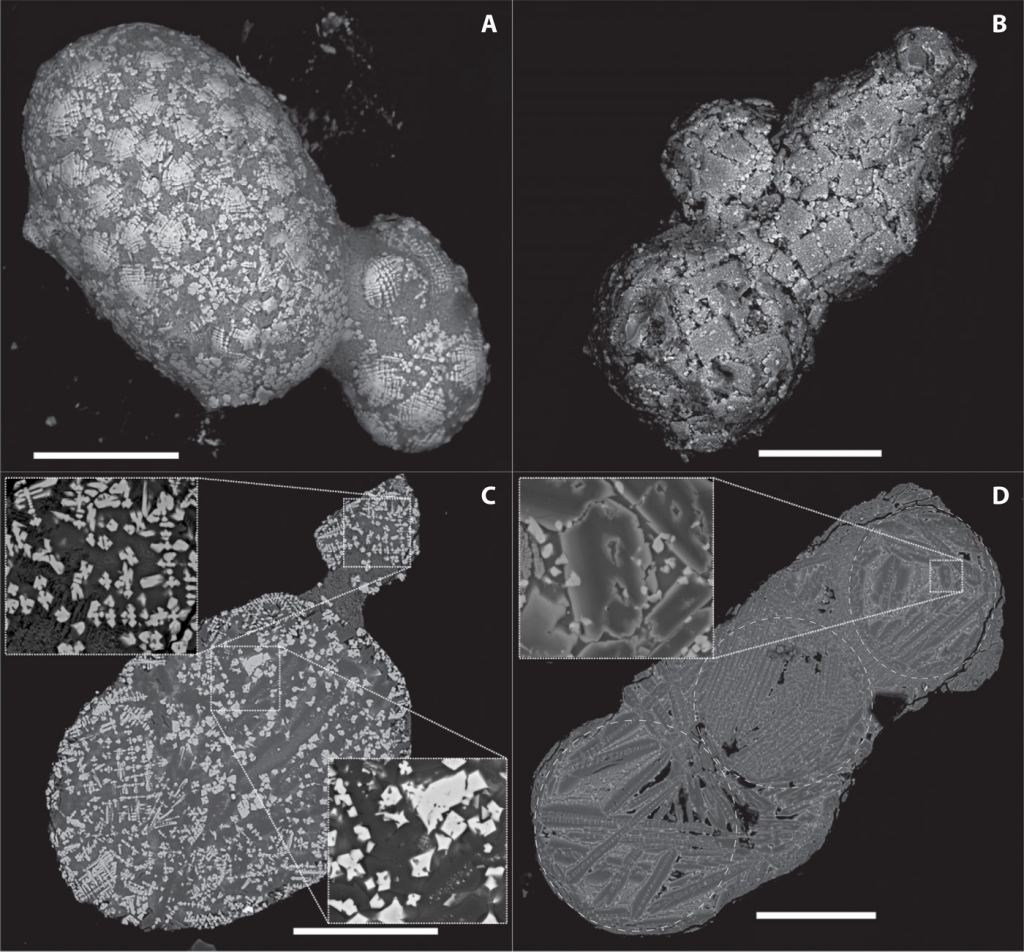100-meter Asteroid Created a Strange Impact Event in Antarctica 430,000 Years Ago
By Nancy Atkinson
The effects of ancient asteroid impacts on Earth are still evident from the variety of impact craters across our planet. And from the Chelyabinsk event back in 2013, where an asteroid exploded in the air above a Russian town, we know how devastating an “airburst” event can be.
Now, researchers in Antarctica have discovered evidence of a strange intermediate-type event – a combination of an impact and an airburst. The event was so devastating, its effects are still apparent even though it took place 430,000 years ago.
Researchers found small black spherules in the Sør Rondane Mountains of East Antarctica, which indicate an unusual “touchdown” event, where a jet of melted and vaporized meteoritic material impacted the ground at high velocity. This impact came as a result of an atmospheric entry and airburst of an asteroid measuring between 100 to 150 meters (330 to 490 feet) wide.

The research, led by planetary scientist Matthias van Ginneken from University of Kent in the UK, described the event as larger than an airburst, but smaller than an impact cratering event. While the density of the vaporized material was too low to form an impact crater, the tiny spherules made from igneous rock signal a high-energy event.
The team’s paper, published in Science Advances, indicates the vaporization of the asteroid during atmospheric entry would have created a cloud of superheated gas from which the extra-terrestrial spherules would have pelted the ground at high speeds, perhaps several kilometers per second.

The Chelyabinsk event, the largest witnessed airburst (except perhaps the Tunguska event in 1908, which flattened trees for miles), exploded with 20-30 times the force of the atomic bomb over Hiroshima at an altitude of just 14.5 miles (23 km). Before it detonated into thousands of mostly gravel-sized meteorites and dust, researchers estimate the incoming meteoroid was about 20-meters (66 feet) wide, about the size of five-story building. The shock wave from the explosion shattered windows and damaged buildings, injuring nearly 1,500 people.
The new findings in Antarctica indicate an impact much more hazardous than both the Tunguska and Chelyabinsk events. The researchers said this highlights the importance of reassessing the threat of medium-sized asteroids, as it is likely that similar touchdown events would produce similar particles and be destructive over a wide area. Between the hot gas and the hot jet of materials pummeling the ground, such an event could create a hellscape.
“While touchdown events may not threaten human activity if occurring over Antarctica,” van Ginneken said, “if it was to take place above a densely populated area, it would result in millions of casualties and severe damages over distances of up to hundreds of kilometers.”
Van Ginneken said their team recommends that future studies should focus on the identification of similar events on different targets across the planet – such as shallow ocean beds – because it would indicate how often events like this may have happened in the past.
Sources: Science Advances, University of Kent
Lead image caption: Mocked up illustration of touchdown impact on Antarctica by Mark A. Garlick
The post 100-meter Asteroid Created a Strange Impact Event in Antarctica 430,000 Years Ago appeared first on Universe Today.

April 14, 2021 at 09:09PM
via Universe Today read more...

Post a Comment